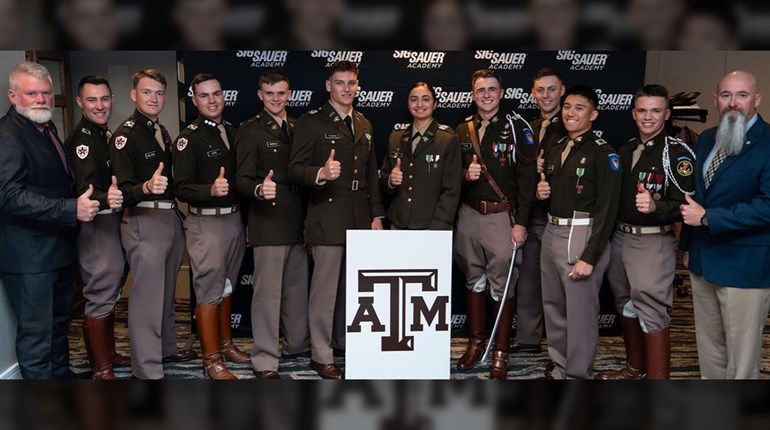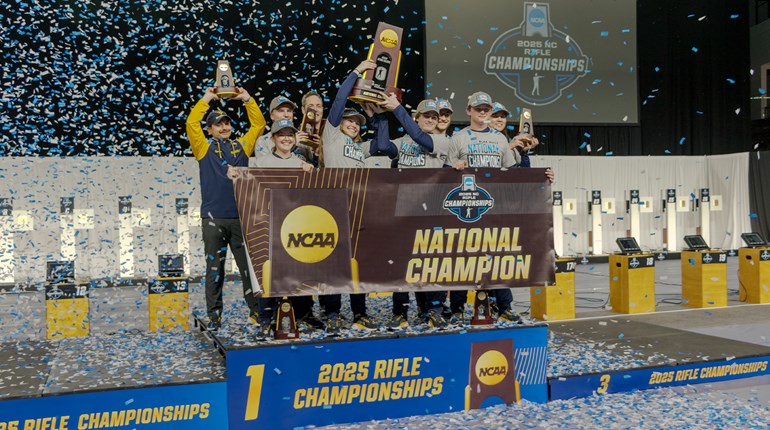
THE Rio Salado Sportsman’s Club in Mesa, Arizona, has hosted numerous prestigious matches, including the Desert Classic and Area 2 Championship, Superstition Mountain Three-Gun and the Western States Single Stack Championship. The range hosts multiple disciplines weekly, with sold-out matches and a waiting list for entry. Their Tuesday Night Steel starts at 11:00 am and usually hosts more than 200 competitors weekly. The range sees a significant amount of shooting activity.
Rio Salado sits on 140 acres of land owned by the Arizona Game & Fish Department. The facility includes more than 48 covered shooting benches with target stands or steel out to 300 yards. The Sporting Clays Range has 13 stations, along with Five-Stand, Trap and Wobble Trap, equipped with lights and voice activation. Range Safety Officers are on duty, and the public range is open 361 days a year. Disciplines such as Air Gun/Bench Rest, Black Powder, Bullseye, Cowboy, Full Auto, High Power, Lever Action, USPSA, Steel Challenge, ICORE, IDPA, Rifle Silhouette, Multi-Gun, Tuesday Night Steel and .22 Pistol leagues hold matches at the range throughout the year. Essentially, Rio Salado offers something for every shooter.
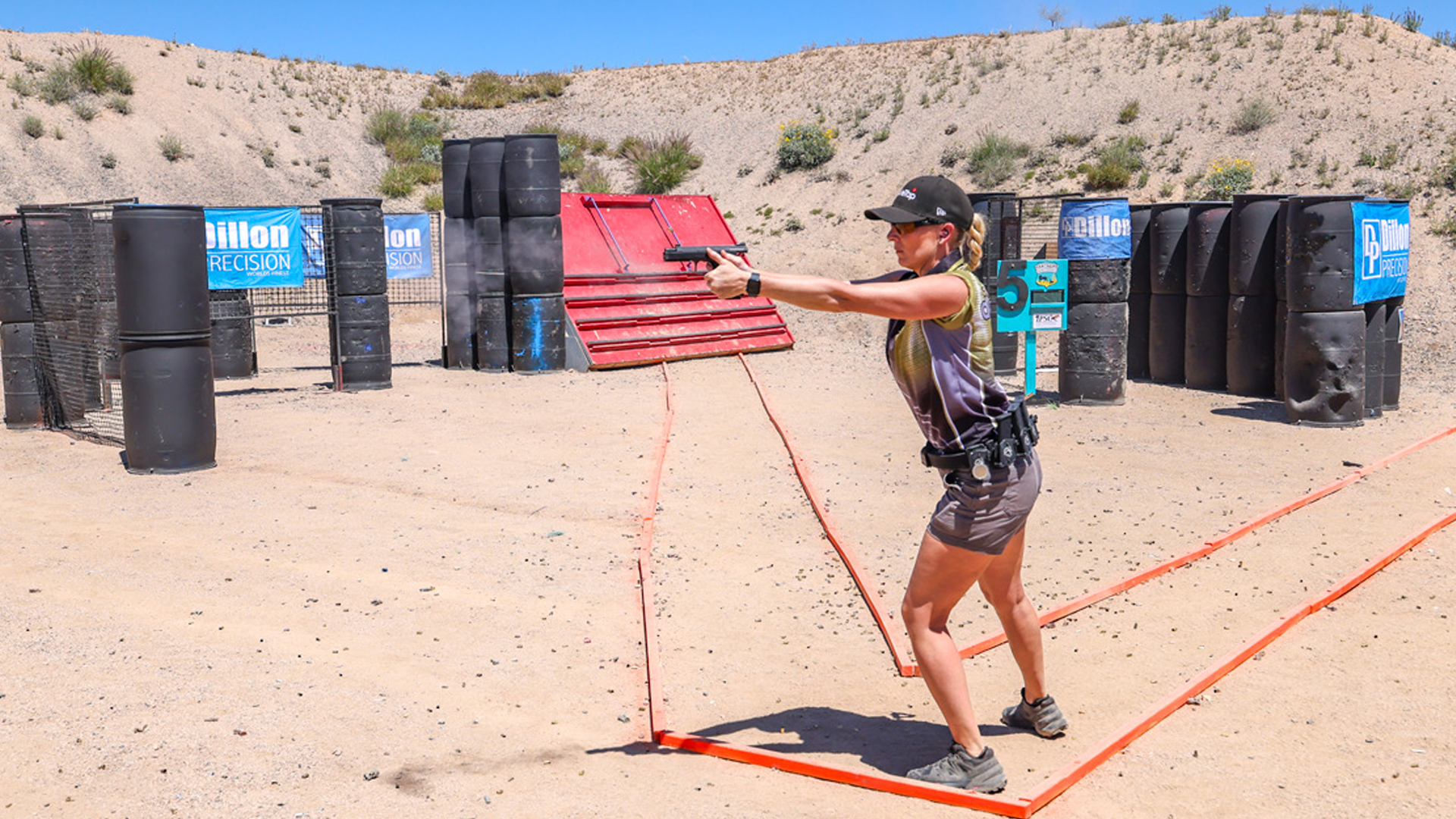
Rio Salado was the host for this year’s IPSC Nationals. The USPSA, a region of the IPSC (International Practical Shooting Confederation), like all other IPSC regions, is required to hold a regional championship under IPSC rules. The IPSC Nationals is a qualifying match for the IPSC World Shoot Team and slot selection. To attend an IPSC World Shoot, whether as a Division Team or Division Category Team member or as an individual competitor, shooting the USPSA Nationals is part of the process, as is shooting the IPSC Nationals.
The IPSC Nationals differ from the USPSA Nationals in that the match is run under the IPSC rules and is recognized as a Level 3 IPSC Championship. IPSC Divisions include Classic, Standard, Open, Production, Production Optics and Revolver, as well as Pistol-Caliber Carbine and Mini-Rifle. There are several differences between the IPSC divisions and USPSA divisions, such as holster placement and types, allowed modifications and magazine length, as well as what divisions use the box, just to name a few. Course design, what is allowed and what isn't, the match flow with stage design, start positions, and the penalties for actions such as dry firing or taking a sight picture after the “Load and Make Ready” commands also vary. Understanding the rules is crucial for optimal performance in any competition. The phrase “I didn’t know that” won’t recover any points lost for penalties or for modifications that might reclassify a Production Optics gun into Open division.
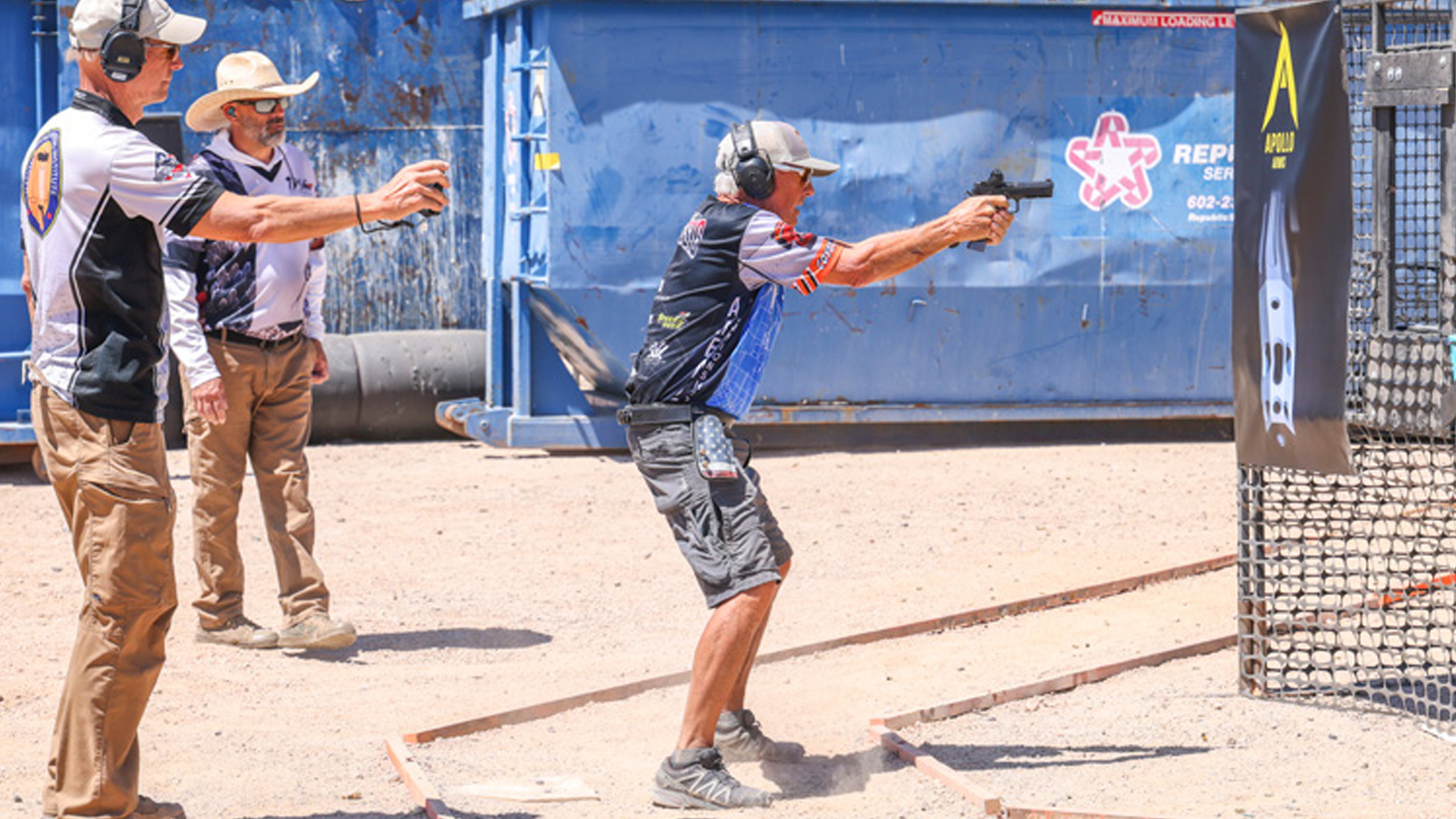
The 2024 U.S. IPSC Nationals was a contracted event for the Rio Salado Sportsman’s Club, which assembled a team to undertake the hosting of this year’s event. The responsibilities included staff selection, stage design, build teams, sponsor management and the extensive planning and coordination with the range and scheduling. The Rio Salado crew divided up the task with Jim Adame assigned as the match director. Leighton Oosthuisen was the assistant match director and designed stages six, 14 and 15. Steve Gonzales handled the admin side of registration as well as stats for the match. Steve Leach recruited and managed the staff assignments, which included bringing in several IROA range officials. Muneki Samejima designed 15 of the 18 stages for the match. Rich Mackay took on the job of getting the stages built with the dedicated crew of Rio Salado regulars. Rick Brotzel was onhand to help Steve with stats and manage the network for the match. Andy Feign handled the food for the staff and competitors. Robert Lange designed the matchbook that had more than 7,700 views from 67 countries. Roxanne Schorbach was doing photography for the match and Max Grun handled the videography. Mick Bkelopavlic helped the sponsors and the awards for the match.
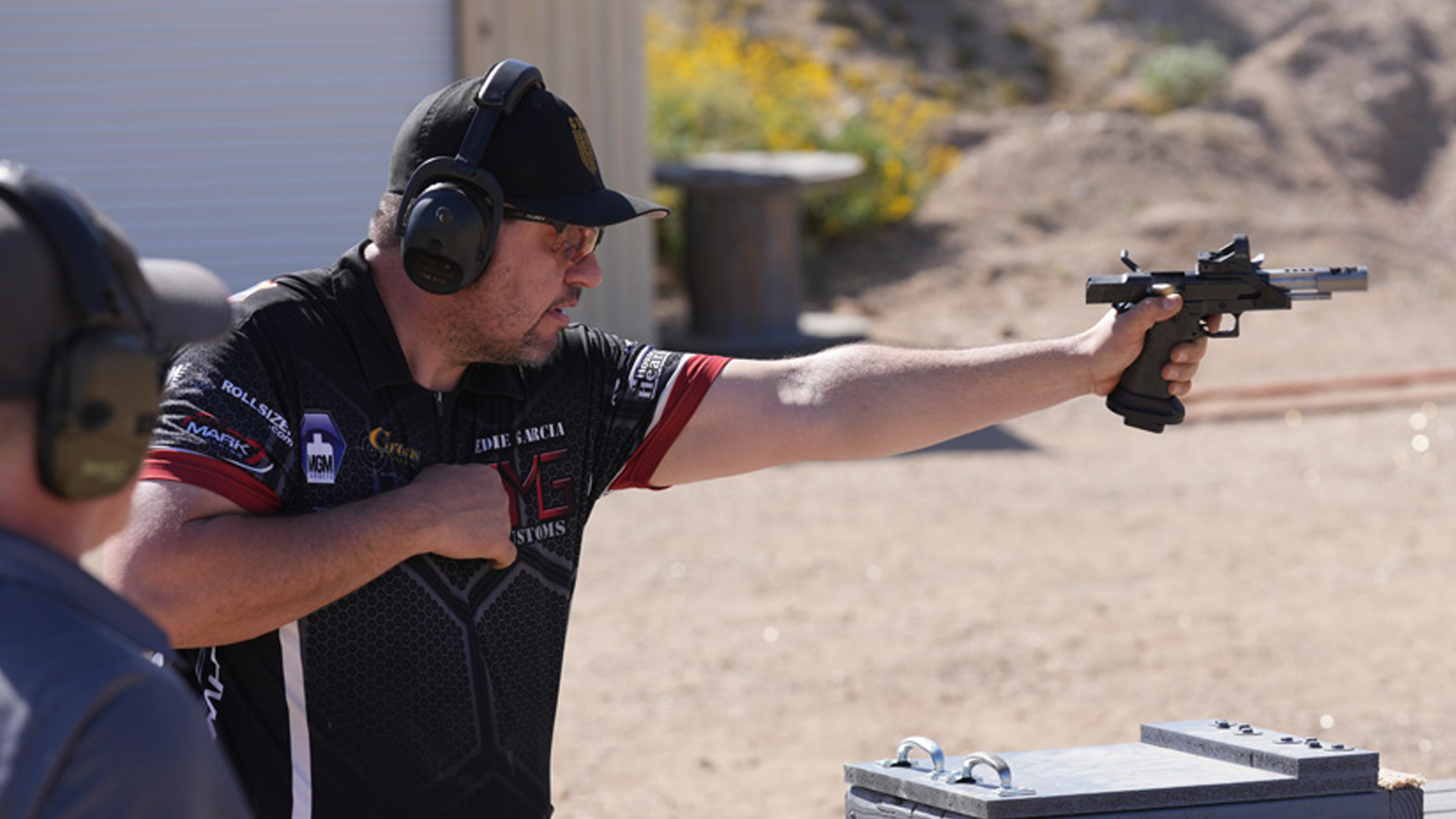
Eighteen stages were designed and executed to challenge the 482 competitors over five days. There were 21 countries that were represented at this year’s event with competitors and staff from Australia, Slovenia, Korea and Germany—just to name a few. The Pre-Match/Staff Match occurred on April 10-11, and the main match spanned three days, April 12-14, with competitors divided into morning and afternoon squads. The range’s bays and natural terrain were utilized to offer a challenging and uniquely IPSC-style match, including various start positions with props or unloaded starts, “jungle runs,” the Cooper Tunnel, shooting from atop a climbed wall and even crossing a teeter-totter. The match was also physically demanding, due to the size of the range and the distance traveled between stages. Weather in the southwest typically offers dry heat in the mid-80s, although temperatures reached the low 90s on Saturday.
A key objective for Jim Adame, Leighton and the team was adhering to the IPSC rules, which included recruiting many IROA-certified range officers who travel and work at international matches. These range officers enhanced the experience by ensuring compliance with IPSC rules. Range Masters Russell Fortney and Troy McManus, the latter also IROA-certified, oversaw the match. As a Level 3 IPSC Match, the appointment of the Range Master is allowed. The stages underwent IROA approval to ensure they met IPSC standards and conformed to the 3-2-1 format: three short, two medium and one long course.
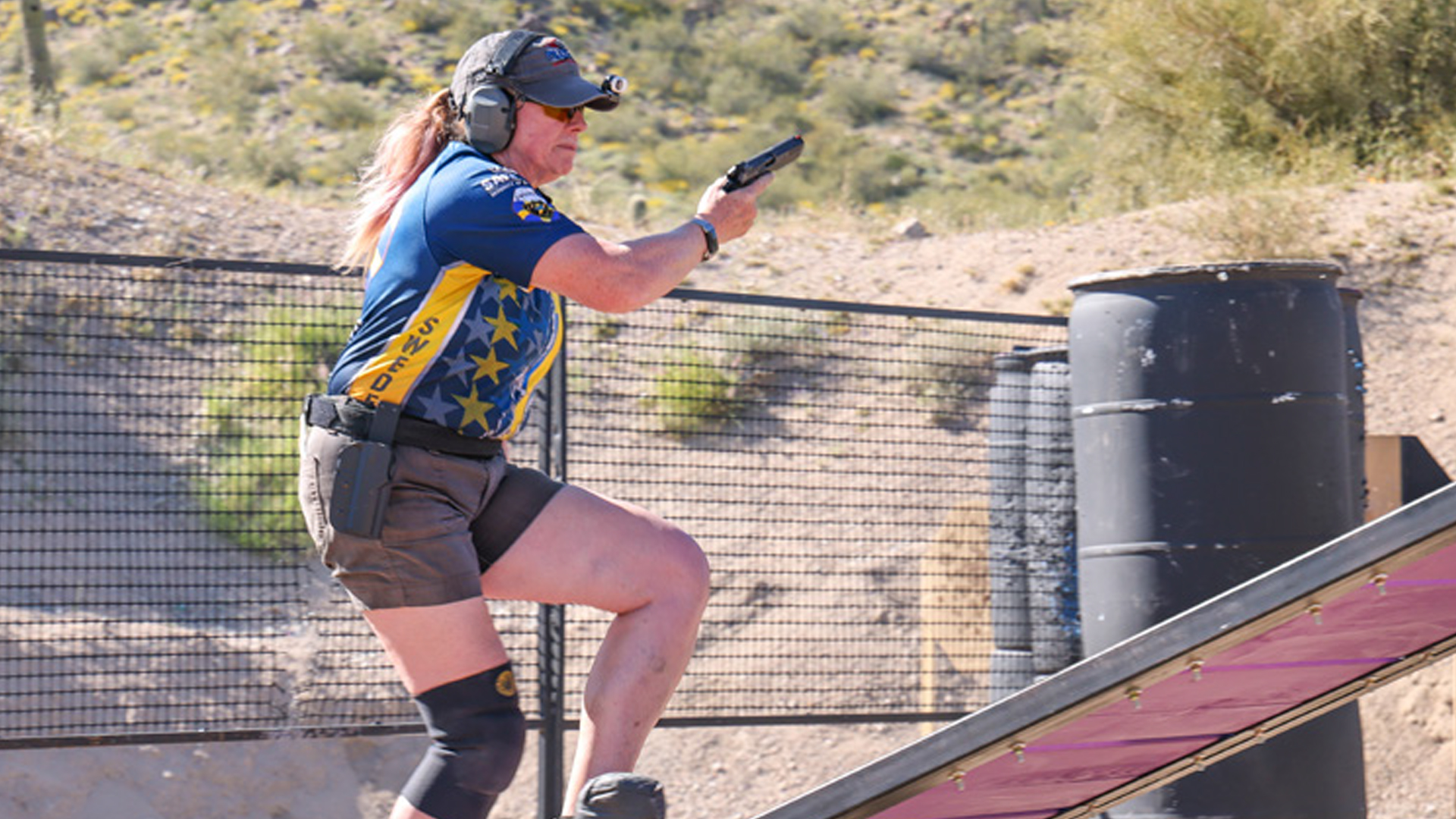
An equipment check is conducted before the start of the match, where each competitor's firearm and gear are inspected to ensure division compliance. All magazines for Standard and Open divisions are measured, and Standard division guns must fit within the IPSC box. Production and Production Optics guns are restricted in terms of allowable aftermarket parts, with a few exceptions. Competitor holsters, magazine pouches and magnets are recorded on an equipment check card and visually inspected by the Range Officers at each stage to confirm that no adjustments have been made.
Another difference for USPSA competitors is the prohibition of dry firing after the “Load and Make Ready” command. Drawing the firearm, racking the slide and dry firing before inserting a magazine is not allowed, nor are sight pictures. You can check and adjust your optics, but not towards a target. Competitors receive a warning for the first infraction, followed by penalties for any repetition throughout the match.
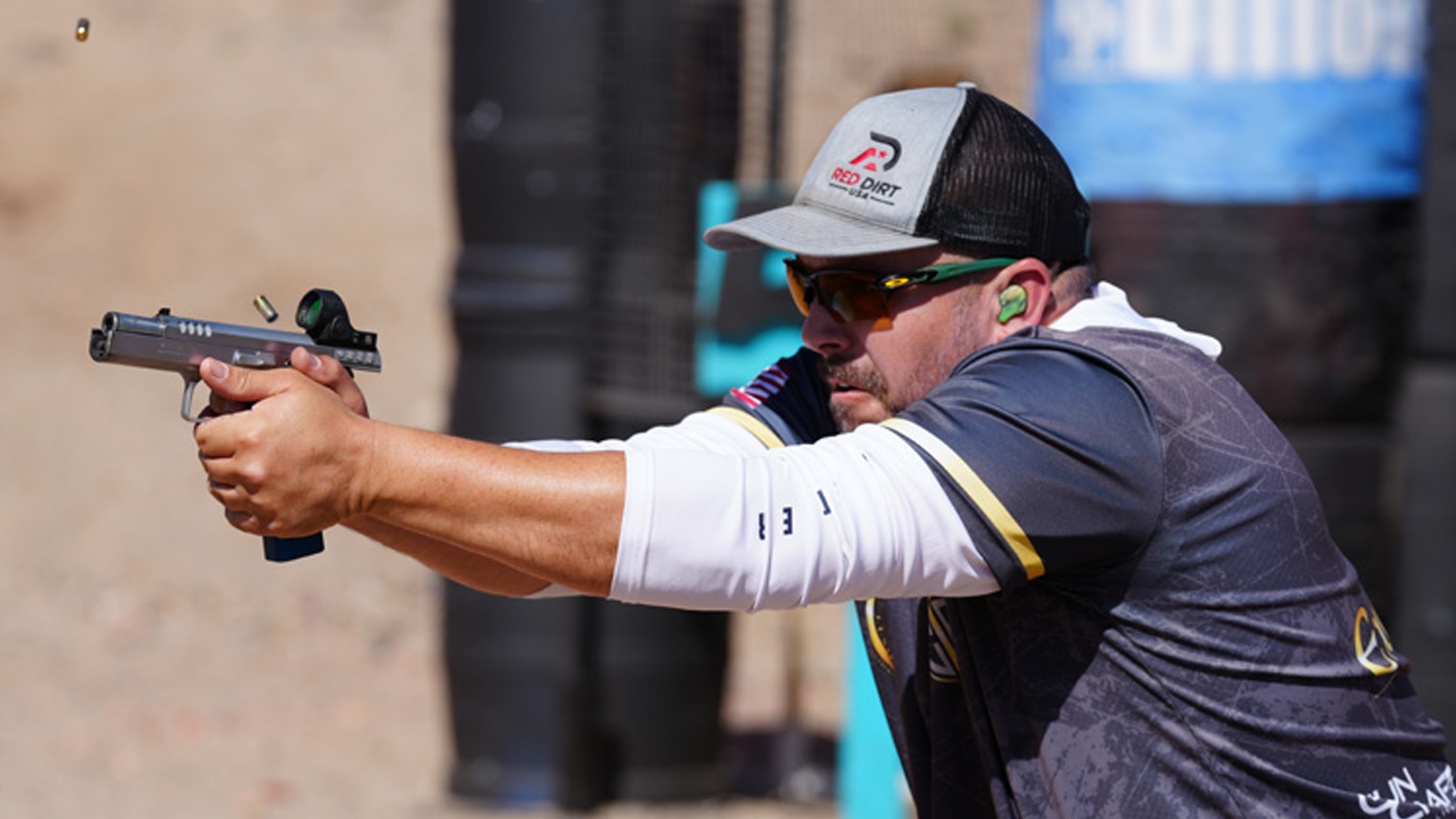
Participation in IPSC divisions mirrors USPSA trends, with red-dot-equipped guns gaining preference. Open division led with 178 competitors, followed by Production Optics with 162, which together comprised 70 percent of the match. Production had 59 competitors, Standard division 39, Classic 37 and Revolver had seven.
The match was comprised of nine short, six medium and three long courses, requiring a minimum of 339 rounds for the 18 stages. More than 70 poppers were used, including two plates on a pendulum swinger, among the 11 activated targets that were either swingers, bobbers or max traps.
Stages 1 and 2 were in a shared bay, where competitors would shoot one and then the other. Stage 1 was a 12-round short course starting with the competitor seated and the gun's chamber empty, magazine inserted. Targets were engaged from one of two ports, with poppers only accessible from the back position. Stage 2, also comprising 12 rounds, began with the competitor holding a mug by the handle, touching the downrange start stick. The mug had to be placed on a table positioned back uprange to the far left of the stage. From the start, there were two targets and two poppers, followed by another two cardboard targets and two poppers through a port in the uprange position.
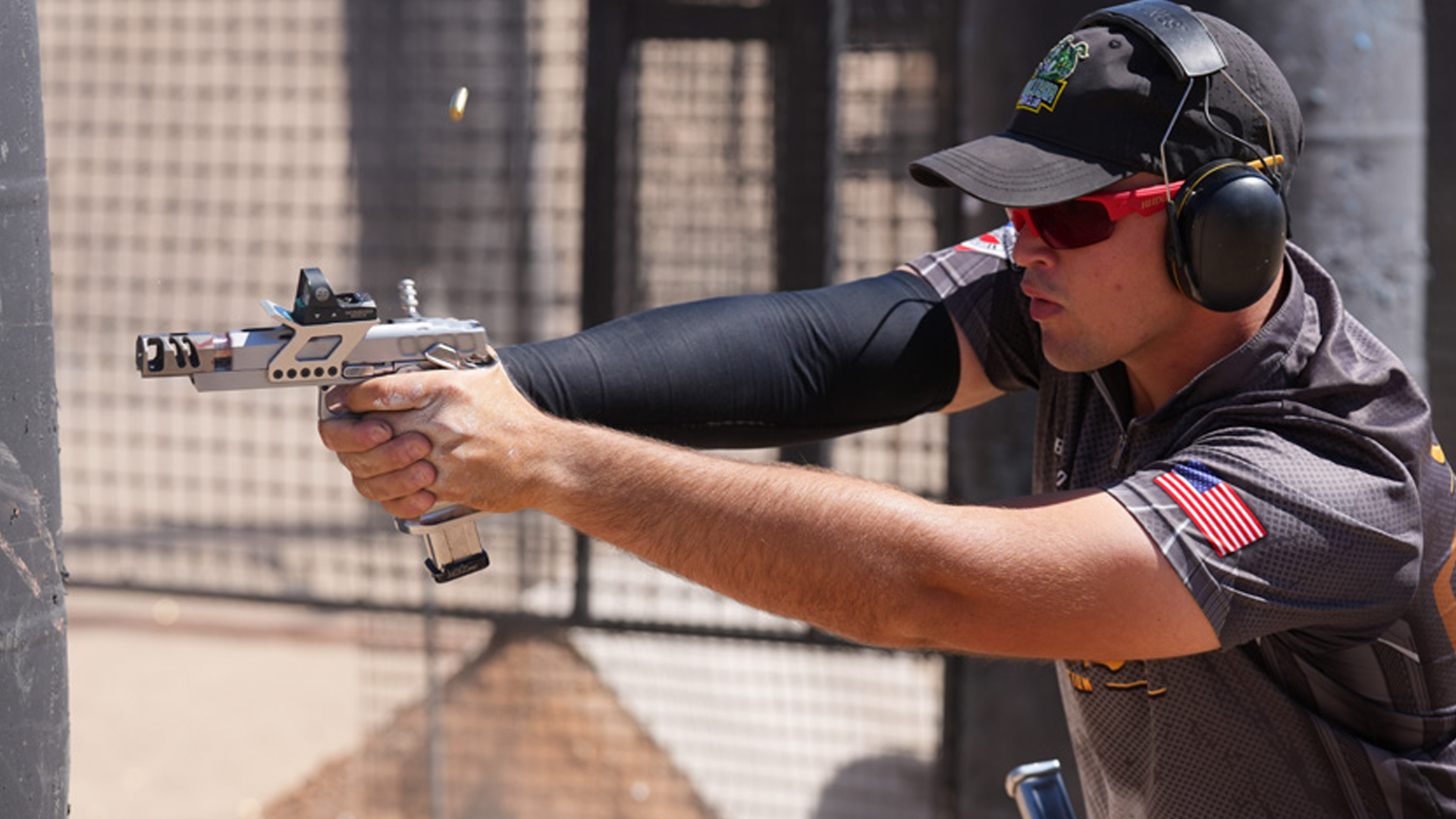
Stage 3 featured the match’s first activated swinger. This 32-round long course took place in a large, rectangular shooting area that resembled the shape of a digitized numeral “8.” The stage was set with 13 targets and a mix of six poppers—mini and regular-sized—spread throughout, requiring competitors to engage targets at every corner. At the start, competitors found themselves in the center of the area with an unloaded firearm on a table, holding a pot in their strong hand. This stage offered a variety of target engagement options. Additionally, the swinger was mounted on a trolley that moved from right to left across the back of the bay, remaining visible behind a steel hardcover to the far left of the shooting area.
Stage 4 featured the dreaded pendulum swinging plates. The shooting area was laid out in a reverse “C” shape, featuring 12 targets and six poppers. Competitors had the option to start anywhere in the shooting area and could choose to engage two cardboard targets and three poppers at approximately 30 to 33 yards at the far left of the stage, or to save them for engagement from a low port downrange later in the course. Moving forward would open up targets on the left and right before coming to the array of targets with the popper that activated the swinging plates. These were difficult, and many competitors went to war with them. Others lucked out and got them in a few shots while many fired two in the general direction of where they were swinging and took off for the low port.
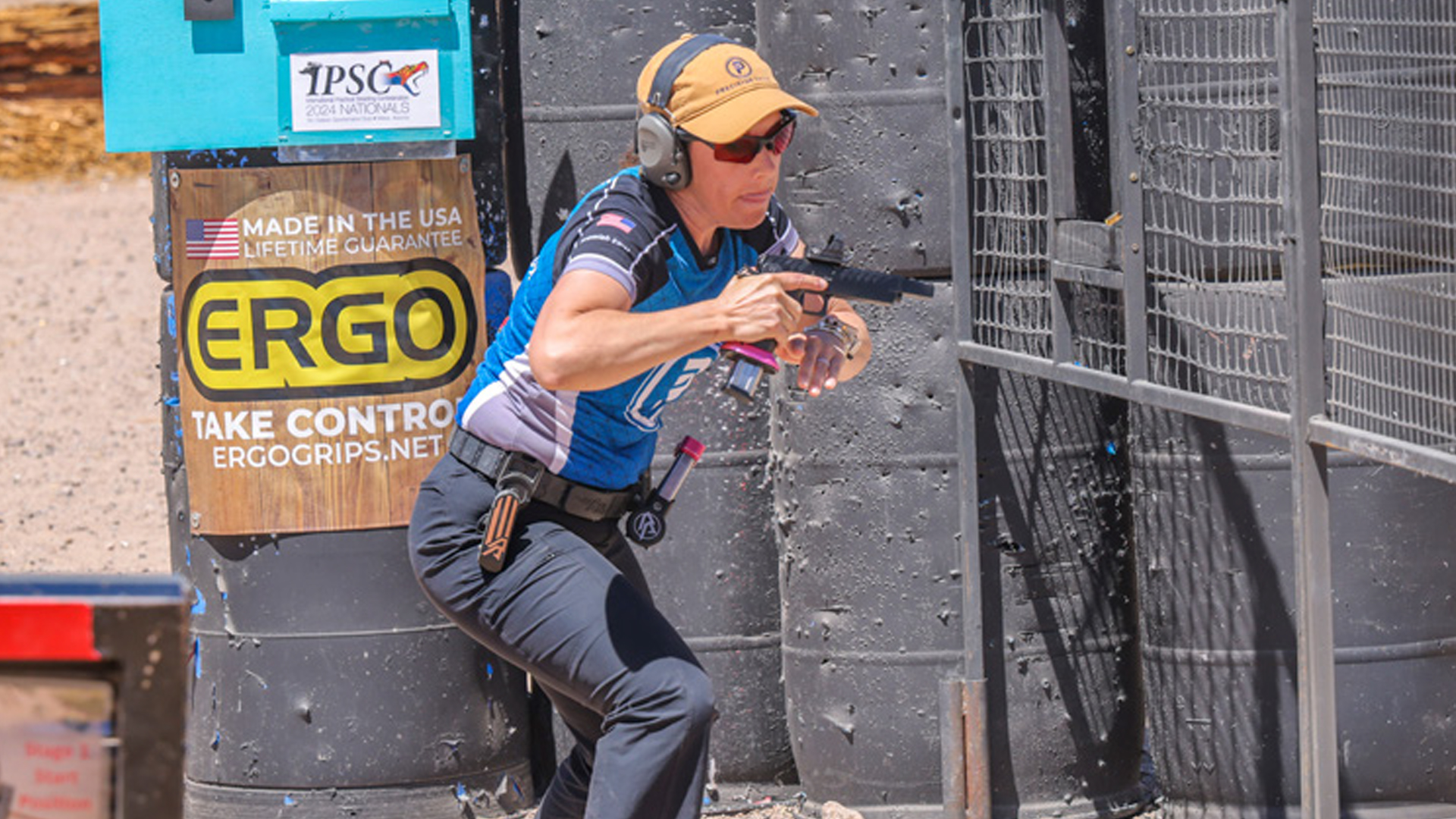
Stage 5 was a medium course with 24 rounds with 10 targets and four poppers. This stage introduced a unique prop, a slotted wall. Competitors were required to climb this wall to engage the final targets that were hidden behind it. This added to the physicality of the match and was one of the more popular stages, at least after gauging the competitors’ reactions.
Stage 6 marked the first natural terrain stage of the match, consisting of a 12-round short course. Rio, known for its extensive range, has incorporated jungle run stages in all the multi-gun matches held throughout the year, and has recently included them in the USPSA Area 2 Championships. This stage comprised a mix of five targets and two poppers. Natural terrain stages offer a distinct set of challenges compared to bay-style stages. With no-shoot steel poppers placed in front of shoot poppers and no-shoot steel in front of the cardboard targets, competitors needed to exercise some throttle control on the trigger to avoid incurring penalties.
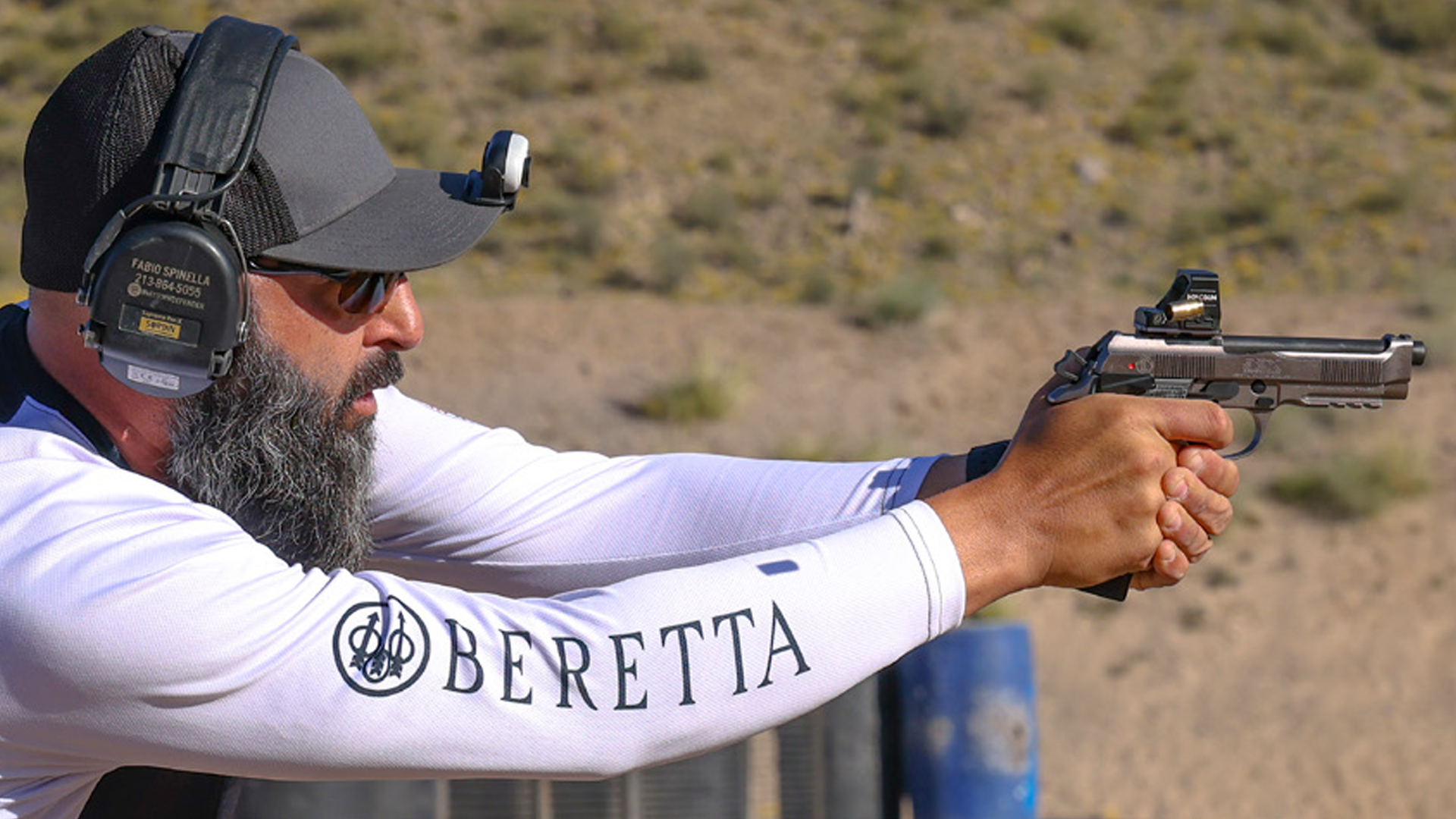
Stage 7 was a 22-round medium course that positioned competitors at the center of the stage, surrounded by walls with ports on either side and another directly downrange featuring a push-down opening. Competitors began by holding a tool bag containing any additional loading devices required for the stage. The stage presented various options on how to shoot it; particularly interesting to observe was how competitors in capacity-restricted divisions managed the bag and ammunition for their needed reloads.
One of the more entertaining props featured in the match was at Stage 8, a teeter-totter set up in the middle of the stage that competitors needed to traverse. There were two targets that had to be engaged from the shooting area on the prop. The course was a 23-round medium course with eight targets and seven poppers. One popper—when hit—activated a bobber located to the left of the stage, which was engaged from the starting position. A swift move forward and to the right presented another array through a port, followed by the challenge of crossing the teeter-totter and ending downrange to the right, engaging an array of poppers and one cardboard target.
Stage 9 was a straightforward, nine-round short course with just three targets and three poppers. However, it had a twist—competitors were required to shoot weak-hand only after retrieving their loaded firearm from a box, the lid of which had to be lifted to access the gun. One of the poppers, when hit, activated a max trap target to the left. As mentioned, the stage was deceptively simple.
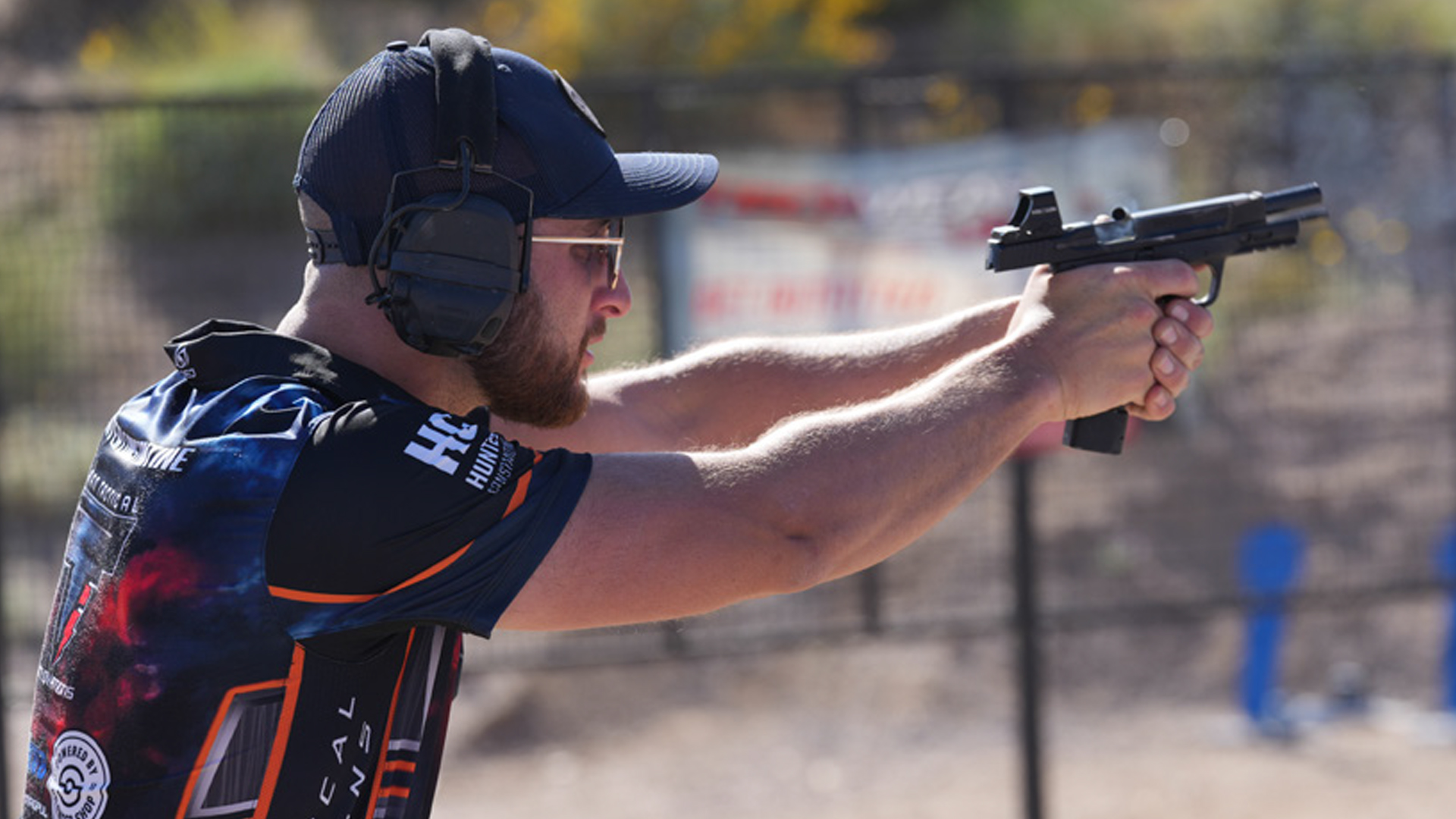
Stage 10 was situated in the same bay as Stage 9 and consisted of another 12-round short course. The layout was relatively simple, featuring four targets and four poppers. The targets were positioned such that precise leans to the right and left were necessary to engage the arrays on the far left and right sides.
Judging by the social media posts following the match, Stage 11 was a fan favorite among many competitors. It was a 24-round medium course that required competitors to lie flat on a platform resembling a bed, with their hands interlaced across their chests. The firearm was positioned on a table downrange from the platform. The stage featured 10 targets and four poppers. Two of the targets were activated—one a max trap and the other a bobber—by opening a door equipped with a spring-loaded mechanism designed to trigger the targets. Competitors needed to time it right to engage a static target, the max trap to the left of the opening door, then transition back to the right to engage the other static target and hit the bobber before moving to the left. There were two ports on the left side, each with different target arrays, and the course concluded on the far left with a single target with a no shoot just eager to take those two final rushed shots.
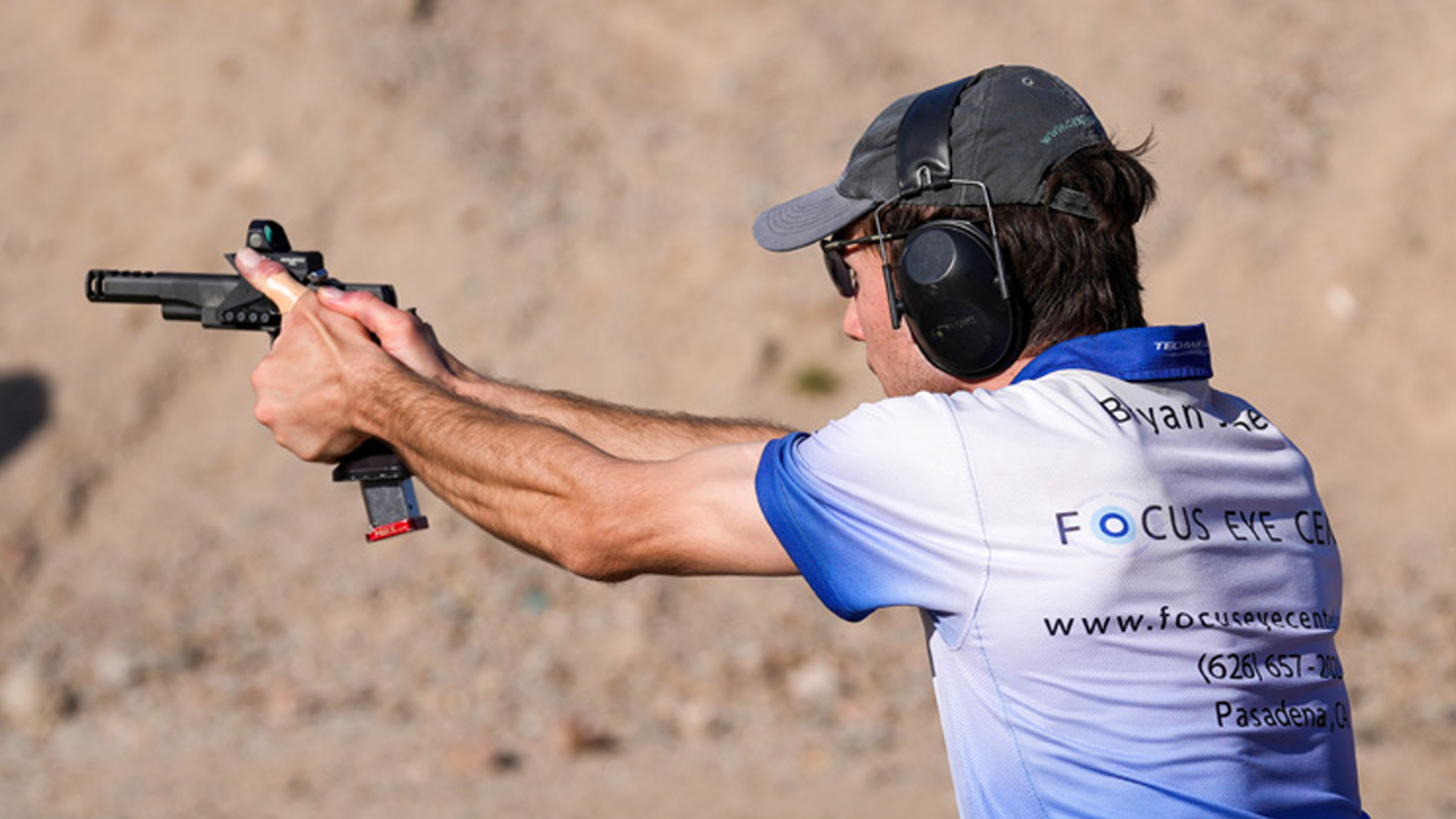
Testing strong-hand and weak-hand-only shooting in an IPSC match is a well-established tradition. Unlike USPSA, where such a requirement may be integrated into a standard-type stage, IPSC does not mandate this. Stage 12 was a typical IPSC-style stage, exemplifying this tradition. It required competitors to engage six targets using only their strong hand, with a total round count of 12. The starting position was at the center of an L-shaped shooting area with hands on marked positions. There were two shooting positions from which to engage the targets; one offered a port through the downrange wall and then with a single target directly ahead, and another port was situated uprange to the right for engaging the remaining targets.
Stage 13 featured the Cooper Tunnel, a fixture commonly found in IPSC matches. Over the past five decades, the use of the Cooper Tunnel has evolved significantly from its original format. In the early days of IPSC matches, it was part of an obstacle course-style stage where competitors had to climb over the Rhodesian Wall, engage targets, crawl through the Cooper Tunnel, and then engage additional targets before reaching the final position, which entailed shooting weakhanded through a makeshift port. At this match, competitors were spared the need to crawl; they only needed to stoop low enough to pass through without disturbing the boards and incurring penalties. This 24-round stage included 10 targets and four poppers, with competitors beginning uprange facing arrays on both the right and left, and two low targets positioned at the front. The starting position involved holding a mop and bucket, which were to be discarded at the start signal.
Stages 14 and 15 shared a natural terrain area. Competitors were to complete Stage 14 before proceeding to Stage 15. Stage 14 began with the competitor seated in a saddle with an unloaded and holstered firearm. Upon the start signal and after dismounting from the saddle, there were six targets available to be engaged with 12 rounds as the competitors progressed forward. In Stage 15, competitors started by holding a snake pole, which had to be placed in the barrel in front of them before firing their last shot. This stage included 12 targets, with the best hit per target being scored. The final shooting position was atop a lookout structure which competitors reached by climbing the stairs or sprinting up a ramp.
I fondly refer to Stage 17 as “Put me in, Coach,” which was yet another favorite among the competitors. The layout was designed in the shape of a baseball diamond and featured three stomp activators, or “bases”, which had to be touched before returning to the home plate start position. At the start competitors held a bat while standing at home plate. Activating the right stomp pad set in motion a fastmoving swinger concealed behind hardcover, along with a popper. The second stomp pad dropped a port for two targets, which were only engageable from the home plate position. The third stomp activated another swinger positioned to the far left of the stage. Competitors then made a swift return to home plate to complete their shots through the dropped port.
The final stage of the match, Stage 18, incorporated a variety of elements, including an activated swinger that had to be shot through a port from an unstable platform—after a sprint from one side of the stage to the other.
This 23-round medium course began on the far right side of the shooting area, where competitors faced a single target and a popper downrange. They then moved quickly to the far right side of the stage to engage an array consisting of two cardboard targets and four poppers through a port. Next, competitors returned to the right to engage two additional poppers and another target, then moved downrange to pick up two more targets. The stage culminated with the competitors mounting a swinging platform to engage the activating popper, the swinger, another popper and a target through the port.
The match was extremely fun, yet posed substantial challenges with its array of interesting props to navigate, tight shots to make and complex arrays to engage. Numerous small IPSC poppers heightened the demand for precision across the stages. Regrettably, Stage 16 was not scored due to inconsistent activation of the double swinger by many competitors, which ultimately led to its removal from the match.
2024 U.S. IPSC NATIONALS RESULTS
CLASSIC DIVISION
- U.S. IPSC National Champion – Jeff Cawthon, 1396.6733
- 2nd – Robert Cernigoj, 1390.6879
- 3rd – Jeremy Reid, 1358.6565
- Senior - High Overall – Kelly Neal, 1239.7624
- Super Senior High Overall – Ivan Runions, 1098.6449
OPEN DIVISION
- U.S. IPSC National Champion – Christian Sailer, 1439.0736
- 2nd – Aaron Eddins, 1419.6435
- 3rd – Bryan Jones, 1408.8444
- Ladies U.S. IPSC Champion – Jessie Harrison, 1186.2276
- 2nd – Sloan Sanders, 1145.4705
- Ladies Senior – High Overall – Karina Draghi, 845.1453
- Senior - High Overall – Shannon Smith, 1210.1911
- 2nd – Henning Wallgren, 1208.8890
- 3rd – Lee Nuguit, 1200.0235
- Super Senior – High Overall – Leighton Oosthuisen, 1106.9683
- 2nd – Kerry Pearson, 1050.5387
- 3rd – Frank Koch, 927.2072
- Grand Senior – High Overall – Glenn Seki, 843.9670
PRODUCTION DIVISION
- U.S. IPSC National Champion – Nils Jonasson, 1424.2145
- 2nd – Michal Stepan, 1405.2336
- 3rd – Sal Luna, 1382.4165
- Ladies U.S. IPSC Champion – Carina Randolph, 860.8677
- Senior – High Overall – Phil Strader, 1155.1691
- 2nd – Tony Caspers, 1047.0695
- Super Senior High Overall – Folke Myrvang, 927.6576
PRODUCTION OPTICS DIVISION
- U.S. IPSC National Champion – Jacob Hetherington, 1401.5656
- 2nd – Mason Lane, 1388.2419
- 3rd – Hunter Constantine, 1335.1204
- Ladies U.S. IPSC Champion – Justine Williams, 1245.3735
- 2nd – Morgan Leonhardt, 1189.6209
- 3rd – Thy Ngo, 1060.8689
- Senior – High Overall – Jan Pavlik, 1287.5184
- 2nd – Jerome Morales, 1232.4365
- 3rd – Michael Seeklander, 1184.1316
- Super Senior – High Overall – Frank Garcia, 1086.2317
- 2nd – John Lohlun, 984.5881
STANDARD DIVISION
- 1st – Rolly Tecson, 1478.8948
- 2nd – Gianni Giordano, 1381.6162
- 3rd – Robert Krogh, 1309.9886
- Senior – High Overall – Todd Jarrett, 1225.6533
- Super Senior – High Overall – Bruce Gray, 840.0951
See the full results of the 2024 U.S. IPSC Nationals at the USPSA website.
The Rio Salado team accomplished exactly what they aimed for when the match was assigned to them—to deliver a true IPSC Nationals. The stages showcased what the expectations are for larger IPSC matches, featuring starting positions, props and difficult shots. It's well-known that competitors often face lower Hit Factors on IPSC stages, and this match was no exception. The Hit Factor, which is the ratio of points to time, can be affected by requirements at the start such as dropping a prop, getting up or off of something and moving to the first position through a port, which inherently adds time not spent shooting. Additionally, the A-zone on an IPSC target is 25 percent smaller than on USPSA targets, demanding greater accuracy and potentially slower shooting. Typically, there is more movement involved, and since leaving the shooting area is not permitted, more time is spent positioning, usually with less shooting while moving into position. This necessitates a distinct approach to stage planning and a slightly different mental strategy when engaging targets.
For USPSA competitors, the above factors presented added challenges, enhancing the intrigue of the match. In the end, the competition was a true test of all the skills needed to succeed. Congratulations to the Rio Salado team for hosting a successful IPSC National Championship, and to all the USPSA Range Officers and international IROA Range Officers who facilitated this event.
Article from the May/June 2024 issue of USPSA’s magazine. All photos by Jake Martens and Schorbach Photography.













